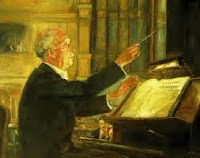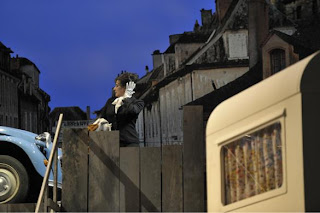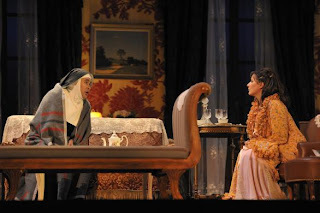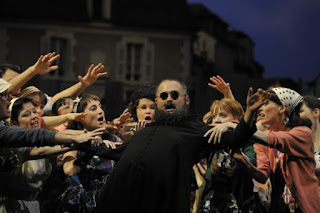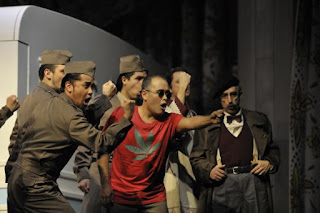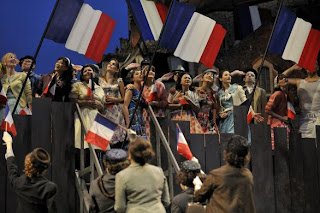historic concert 

pianist Martha
Argentina Argerich (1941), one of the most internationally famous, was introduced a few days (09.02) in the auditorium of
KKL Lucerne, near the Russian cellist Mischa Maisky
(1948) and Lucerne Symphony Orchestra (Luzerner Sinfonieorchester
), directed by Neeme Järvi
Estonian (1937), in concert, in the presence of Russian and Swiss authorities, with which began the festival of Russian culture and the 65 th Anniversary Celebrations of diplomatic relations between both nations.
The concert began with the Luzerner Sinfonieorchester (LSO) and a theme of Czech composer Antonín Dvořák (1841-1904), Scherzo Capriccioso
that Järvi led the waltz dancing to

emerging at times. The duo
Argerich, Maisky ( photo Stephanie Argerich) formed thirty years ago, came to play
Offering Romantic, Russian Rodion Shchedrin (1932), composed especially for both several months ago. Shchedrin is a composer with a long and fruitful career. His works have been performed not only at home but also U.S. and Europe. Already in the 60 Leonard Bernstein with the New York Philharmonic, conducted some of his works. Shchedrin was surrounded of great names in the music of his country, including Dmitri Shostakovich (1906-1975), who now regard his successor.


 In the Double Concerto for Piano, Cello and Orchestra
In the Double Concerto for Piano, Cello and Orchestra Argerich and Maisky are the undoubted stars. A dense work in the prevailing chaos, the delicacy of the solos (piano and cello) and blows the cymbals or cymbals ideal for the audience out of reverie. When finished, Shchedrin, visibly moved, took the stage to flood flowers Argerich and Maisky. Argerich and Maisky
returned after the break with
Sonata for Cello and Piano , the French Belgian composer Cesar Franck (1822-1890). Otherwise we floated out and touch the top, then leave us with the feeling of wanting to continue listening to them, what did not happen because the concert ended with the LSO and
Symphony Nr 9 Shostakovich.
The program presented in Lucerne was repeated last week in other European clubs, in the Auditorium Giovanni Agnelli in Turin (Italy), the Festspielhaus Baden-Baden (Germany), and the Théâtre des Champs-Élysées in Paris.
The gray-haired lady 
Martha Argerich was born in Argentina, but it belongs to that group of artists who come from a place, but of all. Its territory is music. Argerich live more than half a century of his 70 - abroad, mainly in Europe. He began playing the piano at about the same time to start walking, and that the four years he gave his first concert. General Juan Domingo Perón had to do with his training as a pianist and made it possible to study with teachers Friedrich Gulda in Vienna (Austria) and Nikita Magaloff Madeleine Lipatti and Switzerland.
(file photo).
"... I was a little over 12 years, had played in Columbus and Perón had given me an appointment the presidential residence. Mom asked if she could accompany me and he said yes, of course. I was not very Peronist ... ; I remember was always sticking little notes everywhere saying 'Balbin-Frondizi'. He greeted us and asked, 'And where you want to go, Natita?'. And I wanted to go to Vienna to study with Friedrich Gulda. He liked that I would not go to America. The funny thing was that my mom, to ingratiate himself, told him I would love to play a concert in the UES [Union of Secondary Students]. And it seems that I must have put quite revealing a face that I did not like the idea Peron because he began to go along with my mother, saying "Of course ma'am, we will organize" while winking at me, and under the table, I did it with a finger not. He was carrying a mother and reassured me. He realized that I did not. Fantastic, right? And he gave my dad a job. He named the economic aggregate in Vienna. And mom said she thought that she was very intelligent, enterprising and capable and he got another job at the embassy ".
In Classical Journal No. 133, Buenos Aires, 1999. Alex Ross, classical music critic
The New Yorker and author of the indispensable book
The rest is noise (Eternal Noise) states:
"Argerich has qualities that rarely come together in one person: it is a complicated technical agility pianist, is a charismatic woman with enigmatic reputation, is a disaffected translator whose mother tongue is music. The latter may be the quality that distinguishes it. Many pianists play big double octaves, many pianists are photographed well. But few have the unerring naturalness of phrasing that allows them to incorporate the music rather than interpret ".
Argerich played with a long list of renowned musicians and conductors conductors of all parties. It is recognized as one of the best interpreters of Chopin, Liszt, Bach, Schumann, Ravel and Prokofiev, though his repertoire is no shortage issues by Latin American composers, mostly of his compatriots Alberto Ginastera and Astor Piazzolla. He has won the most coveted international awards, is promoting young musicians, and inspiration for documentaries, such as that conducted by filmmaker Georges Gachot Swiss franc,
Martha Argerich: Conversation night.















